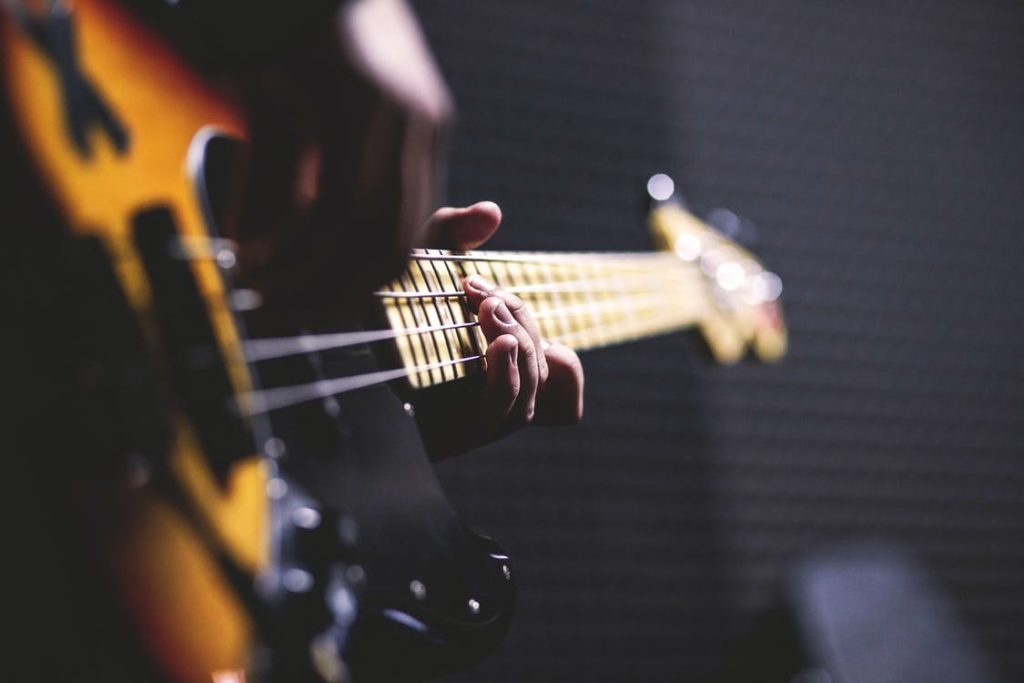
By: Morgan Thaler
A plethora of new obstacles hit the music industry in the new millennium, but perhaps it is about to face the most expensive one yet: copyright infringement lawsuits.[1] The infamous Blurred Lines case, consisting of five years of litigation, resulted in Pharrell Williams and Robin Thicke owing $5.3 million in damages to Marvin Gaye’s estate for infringing on Gaye’s copyright of Got to Give it Up, arguably sparking “a trigger-happy era of plagiarism accusations.”[2]According to a decade-by-decade breakdown of music-related copyright infringement cases, the number of cases from 2010 to present almost tripled the amount of cases between 2000 and 2009.[3] [1]
The Blurred Lines case presents no exception to others suing popular artists for copyright infringement. Artists such as Katy Perry and Ed Sheeran experienced lengthy and costly copyright infringement lawsuits – inciting fear and shock in both the music industry and the legal world.[4] In Perry’s case, Markus Gray (professionally known as Flame) claimed “the instrumental beat of the ostinato in Joyful Noise [was] protectable original expression, and that [Perry] had access to and copied” the work in her song Dark Horse.[5] Here, the Court vacated the jury’s verdict against Perry because, as a matter of law, “[i]t is the plaintiffs’ burden to establish the protected elements of their allegedly infringed work,” and unlike what was held in the Blurred Lines case, the plaintiff here failed to show that each alleged copyrighted element was “independently protectable.”[6] Though this ultimately resulted in a win for Perry, it took six years of costly litigation and lawyer’s fees to obtain that result, and it is likely that Sheeran and other popular artists will suffer the same fate.
In Sheeran’s case, a district court denied his motion for summary judgment to dismiss the complaint, holding that there were still material facts in dispute – mostly questions surrounding whether the allegedly copyright infringing elements of Let’s Get It On were uncommon, and thus, protectable.[7] The holding largely relies on reports submitted by expert musicologists from both parties that disagreed as to whether the “alleged similarities were commonplace prior to Let’s Get It On.”[8]
Music copyright infringement lawsuits are clearly trending upward in quantity, and though plaintiffs’ successes vary by case, the monetary and time costs associated with responding to these suits can be so substantial they may cause artists to hesitate before releasing new content. Prior to actually releasing a new song or album, artists are now forced to face financial and administrative hurdles that used to be optional safety precautions such as purchasing Error and Omissions insurance policies and hiring musicologists to tediously examine their works for similarities to any other song.[9] Finding a musicologist that will attest to substantial similarities in music, as well as the dissimilarities of certain musical elements, could lead to a dangerous standard of frivolous, costly, and unnecessary litigation. In an already competitive industry, these additional hurdles could create an arduous barrier to enter the music industry for new and upcoming artists who do not have funds comparable to popular artists today. Popular songs are inevitably going to share similar themes and qualities, but when courts hold those broad similarities can be protectable elements, artists will likely suffer financially, and listeners may not be hearing as much new content as they have become accustomed to.
[1] See Tim Ingham, Streaming Platforms are Keeping More Money From Artists than Ever (and Paying Them More, Too), Rolling Stone (Apr. 9, 2019), https://www.rollingstone.com/music/music-features/streaming-platforms-keeping-more-money-from-artists-than-ever-817925/; see also Ben Sisario & Karl Russell, In Shift to Streaming, Music Business Has Lost Billions, N.Y. Times (Mar. 4, 2019), https://www.nytimes.com/2016/03/25/business/media/music-sales-remain-steady-but-lucrative-cd-sales-decline.html.
[2] See Tim Ingham, Meet the Crusading Lawyer Hated By the Biggest Companies in Music, Rolling Stone (July 20, 2020), https://www.rollingstone.com/pro/features/richard-busch-music-blurred-lines-lawyer-1031126/; see also Williams v. Gaye, 895 F.3d 1106, 1138 (9th Cir. 2018).
[3] See Cases, GW L. Blogs Music Copyright Infringement Res., available at: https://blogs.law.gwu.edu/mcir/cases-2/ (last visited Oct. 4, 2020) (citing 103 cases between 2010 and 2019, 13 cases in 2020, and 43 cases between 2000 and 2009).
[4] See Amy X. Wang, How Music Copyright Lawsuits Are Scaring Away New Hits, Rolling Stone (Jan. 9, 2020, 2:08 PM), https://www.rollingstone.com/pro/features/music-copyright-lawsuits-chilling-effect-935310/; see also Gray v. Perry, No. 2:15-CV-05642-CAS-JCx, 2020 U.S. Dist. LEXIS 46313, at *54 (C.D. Cal Mar. 16, 2020) (vacating the jury verdict against Perry); Griffin v. Sheeran, 351 F. Supp. 3d 492, 502 (S.D.N.Y. 2019) (denying partial summary judgment for Sheeran and holding the case will go to trial to determine whether Sheeran’s Thinking Out Loud infringed on Townsend and Gaye’s copyright of Let’s Get It On).
[5] Gray v. Perry, 2020 U.S. Dist. LEXIS 46313, at *3.
[6] See id. at *17.
[7] See Griffin v. Sheeran, 351 F. Supp. 3d at 494.
[8] See id.
[9] Wang, supra note 4 (citing Alliant Insurance Services as stating that many A-list music clients have recently shown interest in insurance and that the cost can vary from $20,000 to $250,000 a year and citing Emily Warren, a songwriter for popular music artists, saying some artists are keeping musicologists on personal retainer to help them avoid lawsuits); see also See Amy X. Wang, Why All Your Favorite Songs Are Suddenly Being Sued, Rolling Stone (Aug. 2, 2019), https://www.rollingstone.com/pro/features/katy-perry-led-zeppelin-ed-sheeran-music-lawsuits-865952/ (quoting Sandy Wilbur, musicologist who served as an expert witness on the Blurred Lines case, in 2018 “her ‘last two years have been [her] busiest years ever.’”).

